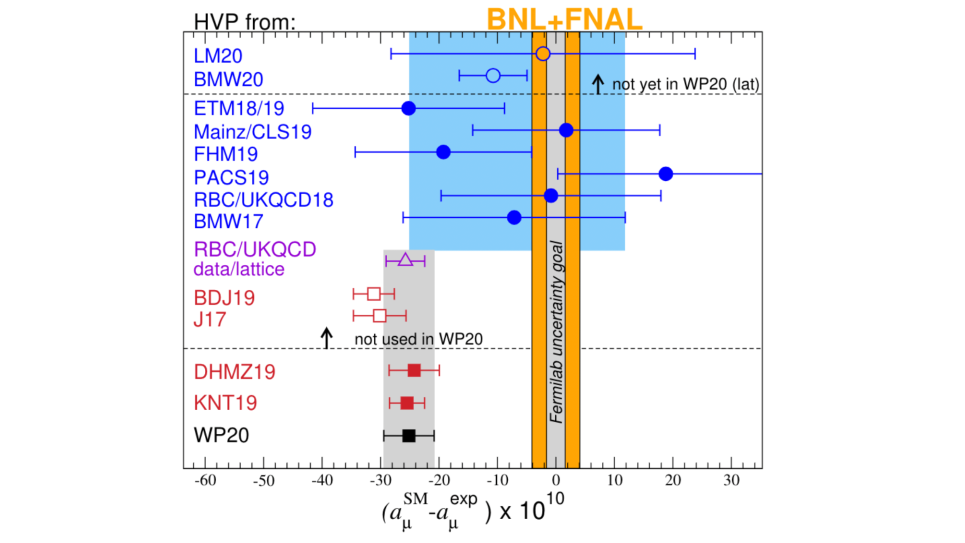
High Precision Hadronic Vacuum Polarization Contribution to the Muon Anomalous Magnetic Moment using Highly Improved Staggered Quarks
In this project, supercomputers at Oak Ridge Leadership Computing Facility, Argonne Leadership Computing Facility, and the National Energy Research Scientific Computing Center will be used to refine the theoretical prediction based on a technique known as lattice Quantum Chromodynamics (QCD).
The muon magnetic moment is one of the most precisely measured quantities in physics, but its value is not in good agreement with the theoretical prediction. On April 7, 2021, the Fermilab Muon g-2 (E989) experiment announced its first result in spectacular agreement with the Brookhaven National Laboratory E821 experiment done almost 20 years ago. In the next few years, the Fermilab experiment plans to increase its precision fourfold. Computers at Oak Ridge Leadership Computing Facility, Argonne Leadership Computing Facility, and the National Energy Research Scientific Computing Center will be used to refine the theoretical prediction based on a technique known as lattice Quantum Chromodynamics (QCD).
This calculation is both critical and very timely. It addresses a priority of the DOE Office of High Energy Physics. The most recent Particle Physics Project Prioritization Panel (P5) report “Building for Discovery: Strategic Plan for U.S. Particle Physics in the Global Context" defines several science drivers including “Explore the Unknown: New Particles, Interactions, and Physical Principles." One of the key opportunities highlighted in the report is study of the anomalous magnetic moment of the muon. If the theoretical precision can be increased, and the difference between theory and experiment remains, it will be strong evidence for new particles or forces in Nature that are not part of the Standard Model of Elementary Particle and Nuclear Physics. This would be truly exciting.